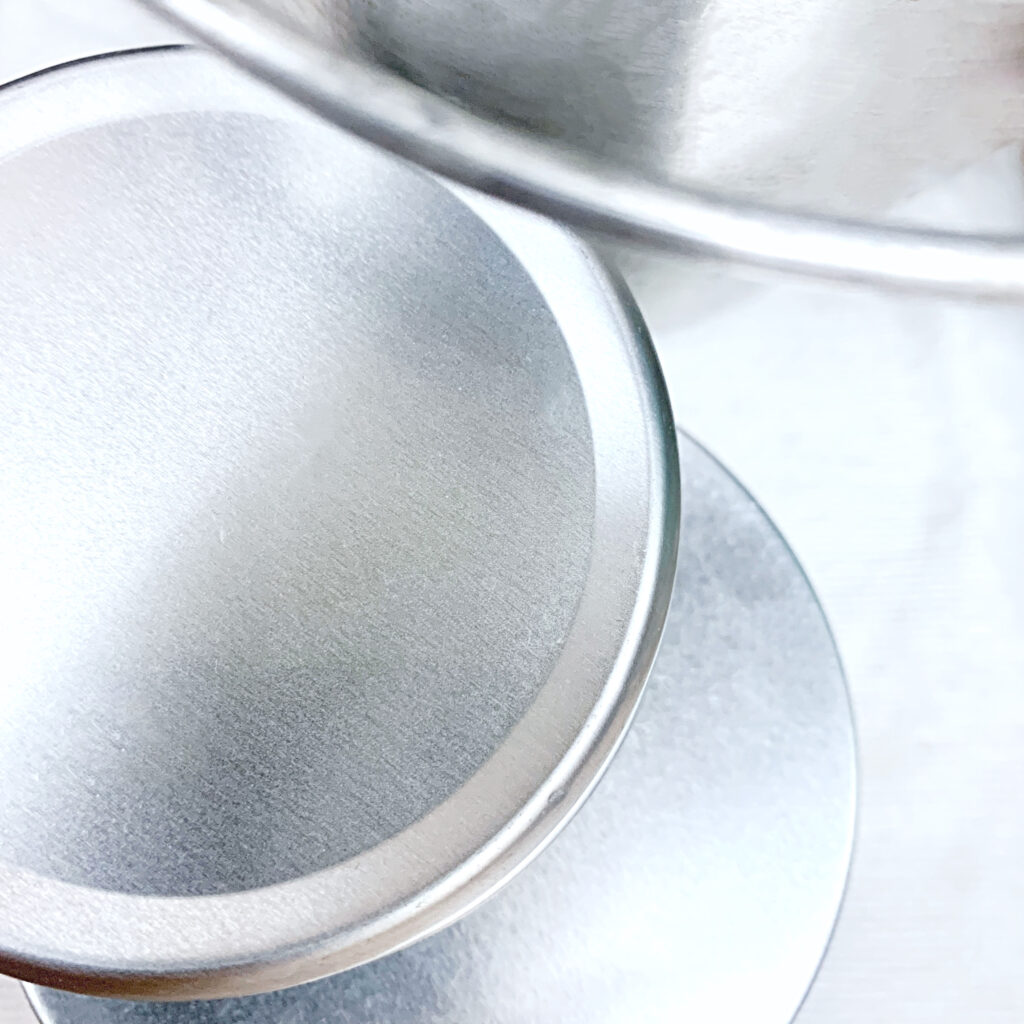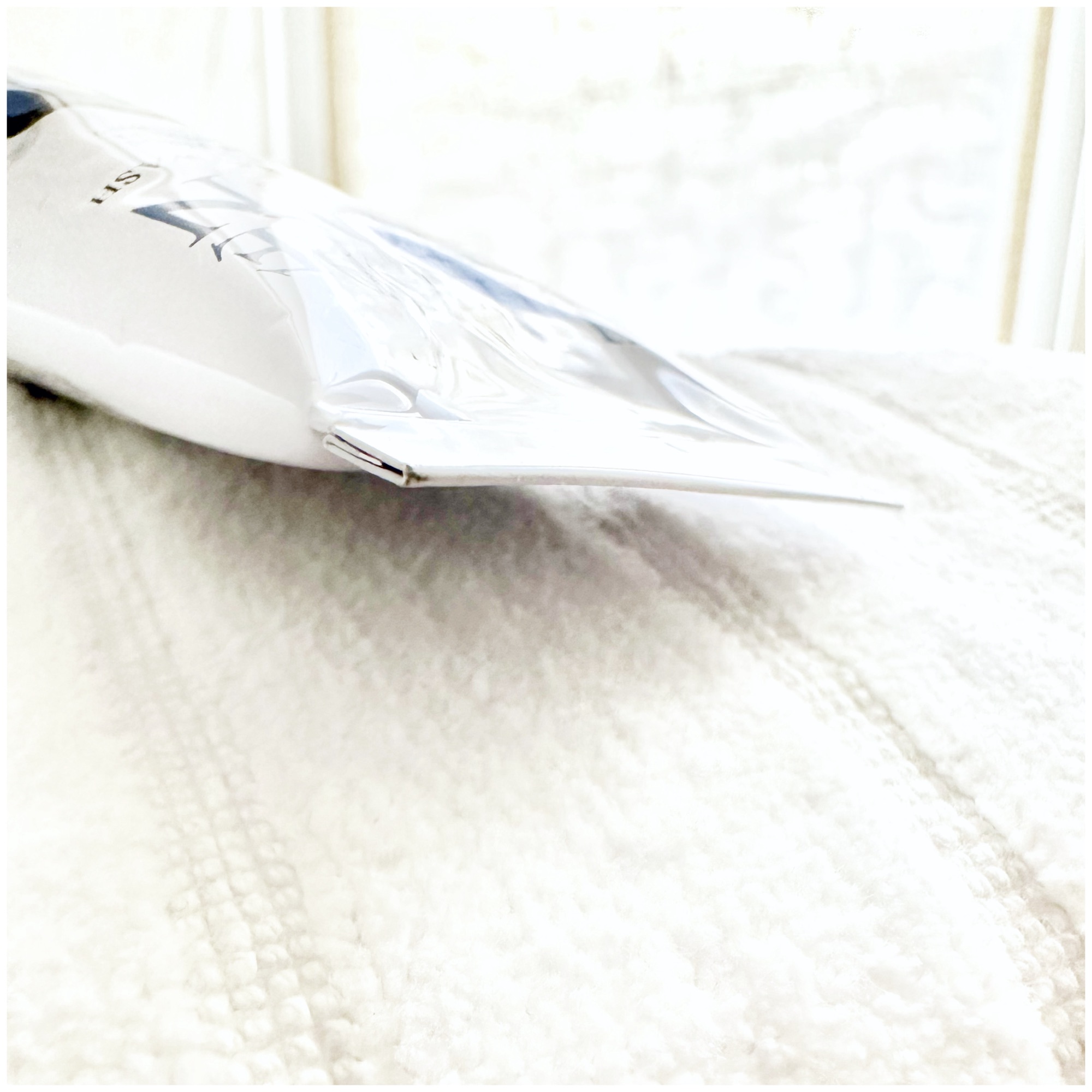Not An Allergen … sort of
Aluminum
This is a somewhat controversial call. The American Contact Dermatitis Society named Aluminum as its Contact Allergen of the Year for 2022 — not because of a high number of contact allergies reported in patch tests (while there are reported cases, contact reactions still tend to be notably rare, especially for how common this substance is, as a recent review on reactions to aluminum shows) but because of surprising new research on aluminum’s allergenicity in some vaccines and immunotherapy, especially in children. Because of this and the following reasons, at the time of this writing, we are calling aluminum not a top contact allergen:
- Aluminum is not (yet) included in lists of top contact allergens published by the North American Contact Dermatitis Group and European Surveillance System on Contact Allergies. These groups are our primary resources as their findings are based on over 20,000 patch tests (combined) conducted in multiple countries.
- Aluminum is not included in standard patch test trays as an allergen (some trays have aluminum discs to house allergens). The article naming aluminum as 2022’s Contact Allergen of the Year recommends: “aluminum should be included in any baseline patch test series for children. Aluminum should be temporarily patch tested in national and international research groups on contact allergy to investigate whether it is justified to consider aluminum for inclusion in baseline patch test series.” Therefore, while new evidence suggests that “Contact allergy to aluminum was once considered to be very rare but is today more common,” it is not a standard inclusion yet in patch test trays and the justification for its inclusion seems yet to be determined.
- The Allergen of the Year study states: “Aluminum in vaccines and preparations for allergen-specific immunotherapy are the major sensitization sources … The common denominator for the Swedish aluminum allergy articles was aluminum hydroxide.” Different types of aluminum salts may elicit more or less contact reactions. Note that COVID-19 vaccines do not contain aluminum as an adjuvant.
- Contact sensitivity to aluminum has been reported (including to the aluminum chambers in some patch tests) but is still relatively rare. This is significant considering that aluminum and aluminum salts are unavoidable — they’re in everything from construction materials to household items, electronics, foods, medicines, drinking water, cosmetics, paper and more.
- There are many questions still to be answered, including whether different aluminum compounds elicit different reactions and whether a sensitization to the aluminum in vaccines and immunotherapy would reliably result in allergies to cosmetics and other items containing different types of aluminum.
What does all this mean?
- If your child experiences itchy nodules under the skin or rash after a vaccine (or when taking immunotherapy medication), ask your pediatrician if the vaccine used contains aluminum hydroxide. If it does, ask your dermatologist to patch test for an aluminum sensitivity. New suggested guidelines can be found in the Allergen of the Year article.
- If you or your child patch test positive to aluminum, stay calm: “It’s not a dangerous allergy; it’s not a threat but it’s something that dermatologists need to be aware of,” said Donald Belsito, MD, a professor of dermatology at Columbia University. “Even on the rare chance that a patient does have a reaction to an aluminum-containing vaccine, these subcutaneous nodules resolve over time. As Dr. Belsito told Medscape, “In his own clinical experience, ‘99.99% of the time they resolve and there is no residual.” The Allergen of the Year article echoes that even confirmed allergies tend to resolve over time.
- Use a certified organic, unbleached pure cotton cloth or another natural fabric as a barrier between you and aluminum items.
- A purely mineral, non-comedogenic barrier-protective product like Stay-On-Point! or Armada Baby or Post-Procedure to minimize contact may also help.
- Choose allergen-free, non-comedogenic, and non-acnegenic formulations for all your personal care products — hair care, cleanser, skincare, makeup … everything to reduce the risk of other allergic reactions.
In case you’re worried about aluminum’s debunked link to breast cancer and Alzheimers, they remain unfounded. The Allergen of the Year study reiterates “there is presently no robust evidence for any association between these diseases and aluminum exposure.”
Subscribe to VMVinSKIN.com and our YouTube channel for more hypoallergenic tips and helpful “skinformation”!
If you have a history of sensitive skin…
…don’t guess! Random trial and error can cause more damage. Ask your dermatologist about a patch test.
To shop our selection of hypoallergenic products, visit vmvhypoallergenics.com. Need help? Ask us in the comments section below, or for more privacy (such as when asking us to customize recommendations for you based on your patch test results) contact us by email, or drop us a private message on Facebook.
For more:
- On the prevalence of skin allergies, see Skin Allergies Are More Common Than Ever.
- For the difference between irritant and allergic reactions, see It’s Complicated: Allergic Versus Irritant Reaction.
- For the difference between food, skin, and other types of reactions: see Skin & Food Allergies Are Not The Same Thing.
- On the differences between hypoallergenic, natural, and organic, check out Is Natural Hypoallergenic? and this video in our YouTube channel.
- To learn about the VH-Rating System and hypoallergenicity: What Is The Validated Hypoallergenic Rating System?
Main References:
Regularly published reports on the most common allergens by the North American Contact Dermatitis Group and European Surveillance System on Contact Allergies (based on over 28,000 patch test results, combined), plus other studies. Remember, we are all individuals — just because an ingredient is not on the most common allergen lists does not mean you cannot be sensitive to it, or that it will not become an allergen. These references, being based on so many patch test results, are a good basis but it is always best to get a patch test yourself.
- Bruze M, Netterlid E, Siemund I. Aluminum-Allergen of the Year 2022. Dermatitis. 2022 Jan-Feb 01;33(1):10-15.
- Kullberg SA, Ward JM, Liou YL, Atwater AR, et al. Cutaneous Reactions to Aluminum. Dermatitis. 2020 Nov/Dec;31(6):335-349.
- Hicks, L. “Aluminum Named Allergen of the Year.” Medscape, Medscape, 28 Mar. 2022, https://www.medscape.com/viewarticle/970976.
- DeKoven JG, Silverberg JI, Warshaw EM, Atwater AR, et al. North American Contact Dermatitis Group Patch Test Results: 2017-2018. Dermatitis. 2021 Mar-Apr 01;32(2):111-123.
- DeKoven JG, Warshaw EM, Zug KA, et al. North American Contact Dermatitis Group Patch Test Results: 2015-2016. Dermatitis. 2018 Nov/Dec;29(6):297-309.
- DeKoven JG, Warshaw EM, Belsito DV, et al. North American Contact Dermatitis Group Patch Test Results 2013-2014. Dermatitis. 2017 Jan/Feb;28(1):33-46.
- Warshaw, E.M., Maibach, H.I., Taylor, J.S., et al. North American contact dermatitis group patch test results: 2011-2012. Dermatitis. 2015; 26: 49-59.
- W Uter et al. The European Baseline Series in 10 European Countries, 2005/2006–Results of the European Surveillance System on Contact Allergies (ESSCA). Contact Dermatitis 61 (1), 31-38.7 2009.
- Wetter, DA et al. Results of patch testing to personal care product allergens in a standard series and a supplemental cosmetic series: An analysis of 945 patients from the Mayo Clinic Contact Dermatitis Group, 2000-2007. J Am Acad Dermatol. 2010 Nov;63(5):789-98.
- Warshaw EM, Buonomo M, DeKoven JG, et al. Importance of Supplemental Patch Testing Beyond a Screening Series for Patients With Dermatitis: The North American Contact Dermatitis Group Experience. JAMA Dermatol. 2021 Dec 1;157(12):1456-1465.
- Verallo-Rowell VM. The validated hypoallergenic cosmetics rating system: its 30-year evolution and effect on the prevalence of cosmetic reactions. Dermatitis 2011 Apr; 22(2):80-97.
- Ruby Pawankar et al. World Health Organization. White Book on Allergy 2011-2012 Executive Summary.
- Misery L et al. Sensitive skin in the American population: prevalence, clinical data, and role of the dermatologist. Int J Dermatol. 2011 Aug;50(8):961-7.
- Warshaw EM1, Maibach HI, Taylor JS, Sasseville D, DeKoven JG, Zirwas MJ, Fransway AF, Mathias CG, Zug KA, DeLeo VA, Fowler JF Jr, Marks JG, Pratt MD, Storrs FJ, Belsito DV. North American contact dermatitis group patch test results: 2011-2012.Dermatitis. 2015 Jan-Feb;26(1):49-59.
- Warshaw, E et al. Allergic patch test reactions associated with cosmetics: Retrospective analysis of cross-sectional data from the North American Contact Dermatitis Group, 2001-2004. J AmAcadDermatol 2009;60:23-38.
- Foliaki S et al. Antibiotic use in infancy and symptoms of asthma, rhinoconjunctivitis, and eczema in children 6 and 7 years old: International Study of Asthma and Allergies in Childhood Phase III. J Allergy Clin Immunol. 2009 Nov;124(5):982-9.
- Kei EF et al. Role of the gut microbiota in defining human health. Expert Rev Anti Infect Ther. 2010 Apr; 8(4): 435–454.
- Thavagnanam S et al. A meta-analysis of the association between Caesarean section and childhood asthma. Clin Exp Allergy. 2008;38(4):629–633.
- Marks JG, Belsito DV, DeLeo VA, et al. North American Contact Dermatitis Group patch-test results, 1998 to 2000. Am J Contact Dermat. 2003;14(2):59-62.
- Warshaw EM, Belsito DV, Taylor JS, et al. North American Contact Dermatitis Group patch test results: 2009 to 2010. Dermatitis. 2013;24(2):50-99.
- Verallo-Rowell V. M, Katalbas S.S. & Pangasinan J. P. Natural (Mineral, Vegetable, Coconut, Essential) Oils and Contact Dermatitis. Curr Allergy Asthma Rep 16,51 (2016) . https://doi.org/10.1007/s11882-016-0630-9.
- Park G, Oh DS, Lee MG, Lee CE, Kim YU. 6-Shogaol, an active compound of ginger, alleviates allergic dermatitis-like skin lesions via cytokine inhibition by activating the Nrf2 pathway. Toxicol Appl Pharmacol. 2016 Nov 1;310:51-59. doi: 10.1016/j.taap.2016.08.019. Epub 2016 Aug 22. PMID: 27562088.
- de Groot AC. Monographs in Contact Allergy, Volume II – Fragrances and Essential Oils. Boca Raton, FL: CRC Press Taylor & Francis Group; 2019.
- De Groot AC. Monographs in Contact Allergy Volume I. Non-Fragrance Allergens in Cosmetics (Part I and Part 2). Boca Raton, Fl, USA: CRC Press Taylor and Francis Group, 2018.
- Zhu TH, Suresh R, Warshaw E, et al. The Medical Necessity of Comprehensive Patch Testing. Dermatitis. 2018 May/Jun;29(3):107-111.
Want more great information on contact dermatitis? Check out the American Contact Dermatitis Society, Dermnet New Zealand, the Contact Dermatitis Institute, and your country’s contact dermatitis association.

Laura is our “dew”-good CEO at VMV Hypoallergenics and eldest daughter of VMV’s founding dermatologist-dermatopathologist. She has two children, Madison and Gavin, and works at VMV with her sister CC and husband Juan Pablo (Madison and Gavin frequently volunteer their “usage testing” services). In addition to saving the world’s skin, Laura is passionate about health, inclusion, cultural theory, human rights, happiness, and spreading (like a VMV cream!) goodness!







